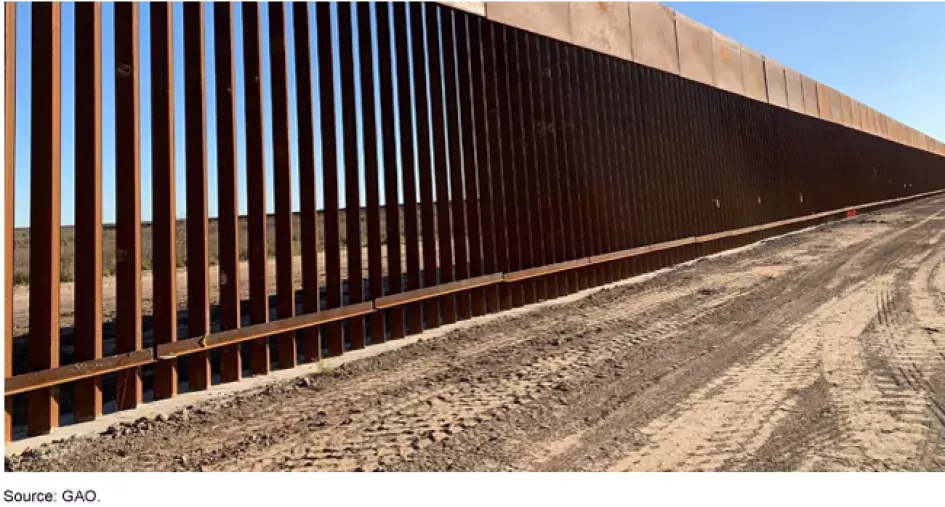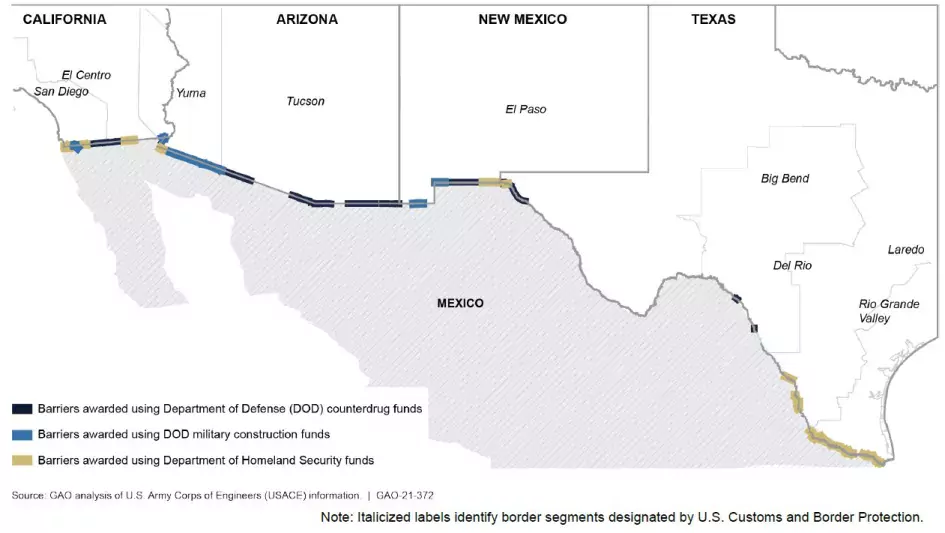Building a Border Barrier: the U.S. Army Corps of Engineers’ Contracting Efforts
After the President declared a national emergency at the border in 2019, billions of dollars were made available for the U.S. Army Corps of Engineers (Corps) to build border barriers. For example, the Corps awarded more than $10 billion in contracts to build the southern border wall between FYs 2018 and 2020.
The bulk of this money came from the Department of Defense (DOD). And unlike the Department of Homeland Security’s funding, which is traditionally the source of money used to build at the border, most of DOD’s funds had to be obligated on contracts during the year of funding. This deadline led the Corps to move faster than usual in awarding contracts.
So, what were the effects of the Corps awarding these border contracts more quickly than usual? Today’s WatchBlog post explores.
Image

How did the Corps move quickly?
The Corps took advantage of existing contracting flexibilities to begin building quickly. These flexibilities allowed the Corps to award $4.3 billion in noncompetitive contracts. However, competition typically helps ensure the government gets a good price; noncompetitive contracts can be more expensive.
Additionally, the Corps allowed several contractors to begin work on the wall while contract terms and conditions were still being negotiated. Allowing construction to begin before finalizing a contract could also result in the government paying more. Without a finalized contract, the contractor has less incentive to control costs. Additionally, requirements, such as the height of the wall, could change—resulting in the government paying for unnecessary work.
What happens next?
By the time the new President ended the national emergency and paused border work in January 2021, the Corps had built more than 450 miles of wall panels—meeting the prior administration’s goal. But most of these miles (381 out of 450) do not include the full wall system—which includes electrical features like lighting and cameras—that were part of the original requirements.
The map below shows the more than 600 miles the Corps contracted for during fiscal years 2018 through 2020, by the source of the funding used.
Image

In April 2021, DOD announced that it will no longer use its funds for border wall construction. But, given the Corps’ longstanding role supporting the Department of Homeland Security’s border security efforts, we recommended that the Corps assess the approaches used for building the wall and, as appropriate, its acquisition strategies going forward. The Corps agreed with our recommendation and stated it will conduct after-action reviews to identify lessons learned from its approach to the national emergency.
Find out more about our work on the southern border wall construction by checking out our new report.
- Questions on the content of this post? Contact the WatchBlog team at blog@gao.gov.
GAO Contacts
Related Products

GAO's mission is to provide Congress with fact-based, nonpartisan information that can help improve federal government performance and ensure accountability for the benefit of the American people. GAO launched its WatchBlog in January, 2014, as part of its continuing effort to reach its audiences—Congress and the American people—where they are currently looking for information.
The blog format allows GAO to provide a little more context about its work than it can offer on its other social media platforms. Posts will tie GAO work to current events and the news; show how GAO’s work is affecting agencies or legislation; highlight reports, testimonies, and issue areas where GAO does work; and provide information about GAO itself, among other things.
Please send any feedback on GAO's WatchBlog to blog@gao.gov.




